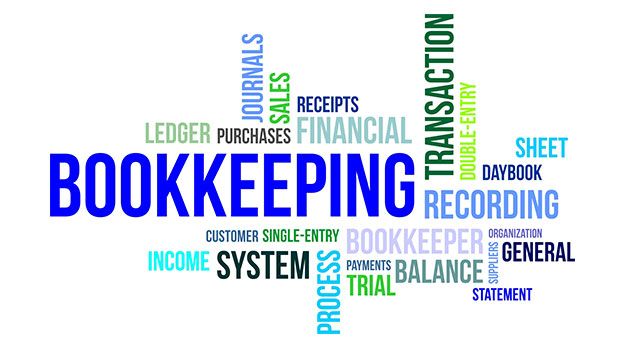Developing Successful Business Management for your Business
Issue 0035
Leadership and debtors’ management are two of the biggest challenges facing business managers; whilst benchmarking is a crucial management tool to enable a business to compare its performance with its peers.
In this edition, we review some of the key aspects of each of these management tools.
Leadership
One of the biggest challenges for business management is the development of appropriate leadership strategies for a business.
Various studies have indicated that the most important element in improving productivity is leadership. Well-led organisations are 12% more productive and up to 3 times more profitable. Higher performance is created through quality and inclusiveness of leadership, as well as innovation. Leaders have the greatest impact on productivity and profitability at all levels.
Participation and involvement in key decision-making processes makes employees feel valued.
In March 2010, the late Don Argus, former chairman of BHP Biliton and CEO and the National Australia Bank (NAB), said:
“The successful leaders of today must understand their power rests with the people for whom she/he is responsible. To tap that power, the leaders must abandon the old baggage of dominance, control and self-centredness.”
In 2015, there is no doubt that leaders need to be decisive and firm and they must also develop the people skills that enable them to create the environment, irrespective of management level, in which their team members work willingly together to support the mission and achieve common goals. The best outcomes and long-term successes come from leaders working with and through others. Old ideas of achievements simply through command and control by a dominant hierarchy have lost their effectiveness and relevance.
The challenge for leaders is to review your own leadership, the strengths and abilities of your managers and encourage all of your team to participate in leadership development activities.
A complimentary copy of an article, “Introduction to Leadership”, is available. Click here to obtain your copy.
Debtors' management
Debtors’ management is one of the biggest challenges facing small/medium enterprise business managers.
Businesses need to implement a debtors’ management strategy to reduce their business’ investment in debtors, by reducing debtors’ days outstanding.
An effective debtors’ management system needs to start at the very beginning.
- Have you got a credit application form?
- Is the completed credit application form checked?
- Are referees contacted?
- If credit is granted to a new customer, do you send a “Welcome to New Customer” letter, advising the new customer of the terms of trade to which you have agreed?
- Are you conscious of completing a Terms of Trade Agreement and a Retention of Title Agreement so that registration can be made on the Personal Property Securities Register (PPSR), to protect your business relative to receiving payment and averting preferential payment claims from liquidators?
- Are tax invoices prepared and promptly sent to your customers?
- If you’re sending debtors’ statements, are they promptly sent at the end of the month?
- Is the debtors’ days analysis prepared for analysis within 48 hours of the end of the month?
- Do the management team review the debtors’ days outstanding calculation and determine strategies for the recovery of debt?
- Are you utilising an online debt management system to assist in the management of your debtors?
Businesses can tie up an enormous amount of money in the debtors’ ledger.
An effective debtors’ management system can significantly enhance the business’ cashflow position.
If a business with credit sales of $2M per annum enacted a debtors’ management system, which contributed to reducing the debtors’ days outstanding by 10 days, this would improve the business’ cashflow position by $54,794.
A complimentary copy of an article, “Debtors’ Overview”, is available. Click here to obtain your copy.
Benchmarking
Benchmarking is the comparison of a business’ operating KPIs and other financial ratios with best practice in similar businesses. Benchmarking enables a business operator to conduct a peer-to-peer review.
It’s very difficult and lonely in small business. It’s very hard to find authentic data against which a business can compare its performance to others operating in the same business. This information is generally not known or released, which makes it very difficult for small/medium enterprise operators to know where they stand, relative to revenue generated per employee, gross profit percentages, labour to turnover percentages, net profit percentage to turnover and other performance data as compared to the overall industry performance figures.
Benchmarking is undertaken by all types of persons, not just business people. Sportspeople have been doing it for years. Cricketers, for example, are great record keepers and they compare bowling averages, batting averages, number of catches taken, etc. Some cricketers use baseballers to teach the players how to throw and how to speed up their ground fielding. Other sportspeople set and monitor actual performance against personal bests for national or world records. They change parts of their technique. They understand the importance of diet. They use the most efficient equipment possible. They visualise future performance. Then they measure progress towards their target.
All these steps involve improving one aspect of their performance or technique, in an effort to improve their overall performance.
Manufacturers buy a competitor’s product and then pull it apart, looking for ways of improving their own product.
The information you could glean from undertaking a benchmark comparison report, at least on an annual basis, will significantly assist a business’ overall performance.
A complimentary copy of an article, “Benchmarking”, is available. Click here to obtain your copy.
Articles on Small Business
We invite you to explore the ESS Small Business' website, to view a range of articles, papers and templates to assist you in your small/medium enterprise journey, including a complimentary copy of the following articles:
- Introduction to Leadership
- Debtors' Overview
- Benchmarking
Past Posts
-
 Innovation is Important for SMEs
Innovation is Important for SMEs -
 6 Steps to Boost Your Productivity and Profits
6 Steps to Boost Your Productivity and Profits -
 Tax Incentives For Early Stage Investors
Tax Incentives For Early Stage Investors -
 ESIC Targets SMEs, Inventors, Young Companies
ESIC Targets SMEs, Inventors, Young Companies -
 Early Stage Innovation Company Investor Opportunities
Early Stage Innovation Company Investor Opportunities -
 Will You Have an ESIC Story?
Will You Have an ESIC Story? -
 Are you Receiving a CFO Service from your Accountants?
Are you Receiving a CFO Service from your Accountants? -
 Succession Planning
Succession Planning -
 Business Plans
Business Plans -
 The Year for Business Advisory Services!
The Year for Business Advisory Services! -
 Are you Aware of the PPSR?
Are you Aware of the PPSR? -
 SME Operators – Accountants can Help you with Debtors’ Ma...
SME Operators – Accountants can Help you with Debtors’ Ma... -
 Happy New Financial Year
Happy New Financial Year -
 The Finalisation of the ESIC Legislation will be a Great ...
The Finalisation of the ESIC Legislation will be a Great ... -
 A Business Evaluation Review Can Assist You
A Business Evaluation Review Can Assist You -
 June is a Great Time to Prepare a Business Plan
June is a Great Time to Prepare a Business Plan -
 Businesses Need a Broad Succession Strategy
Businesses Need a Broad Succession Strategy -
 Innovation Companies are a Great Opportunity for SMEs
Innovation Companies are a Great Opportunity for SMEs -
 The PPSR – are you aware of it and how it can affect your...
The PPSR – are you aware of it and how it can affect your... -
 Debtors Management - Vital for Business Success
Debtors Management - Vital for Business Success -
 How can your Accountant assist you?
How can your Accountant assist you? -
 The Personal Property Securities Register – how do you pr...
The Personal Property Securities Register – how do you pr... -
 Legal Advice is Essential for Business Success
Legal Advice is Essential for Business Success -
 Is your accountant your trusted adviser
Is your accountant your trusted adviser -
 Is your accountant famous for adding value?
Is your accountant famous for adding value? -
 Portfolio Allocations Are Important For Effective Management
Portfolio Allocations Are Important For Effective Management -
 The Challenges To Navigate In 2015
The Challenges To Navigate In 2015 -
 Business Plans Are Important For All Businesses
Business Plans Are Important For All Businesses -
 Entrepreneurs’ Infrastructure Program
Entrepreneurs’ Infrastructure Program -
 Digital Disruption Is A Major Concern
Digital Disruption Is A Major Concern -
 Court Case Decisions on the Personal Property Securities ...
Court Case Decisions on the Personal Property Securities ... -
 Personal Property Securities Act Presents Businesses A "T...
Personal Property Securities Act Presents Businesses A "T... -
 Do You Require Additional Financial Services?
Do You Require Additional Financial Services? -
 Personal Property Securities Act – How Does It Affect Sma...
Personal Property Securities Act – How Does It Affect Sma... -
 Business Health Checks For Your Business
Business Health Checks For Your Business -
 Why Do Some Accountants Offer Chief Financial Officer Ser...
Why Do Some Accountants Offer Chief Financial Officer Ser... -
 Getting Assistance From Your Accountant To Better Manage ...
Getting Assistance From Your Accountant To Better Manage ... -
 Identifying The Services You Want To Receive From Your Ac...
Identifying The Services You Want To Receive From Your Ac... -
 What Is Business Advisory Services?
What Is Business Advisory Services? -
 Accountants Can Offer More Services Than Just Tax Returns
Accountants Can Offer More Services Than Just Tax Returns -
 Being Kept In The Loop By Your Accountant
Being Kept In The Loop By Your Accountant -
 Personal Property Securities Register – Have You Develope...
Personal Property Securities Register – Have You Develope... -
 Reducing Debtors' Days Outstanding
Reducing Debtors' Days Outstanding -
 Management of Costs - An Overview
Management of Costs - An Overview -
 Succession Planning - Why Is It Necessary?
Succession Planning - Why Is It Necessary? -
 Safe Guarding your Business under the Personal Property S...
Safe Guarding your Business under the Personal Property S...




































